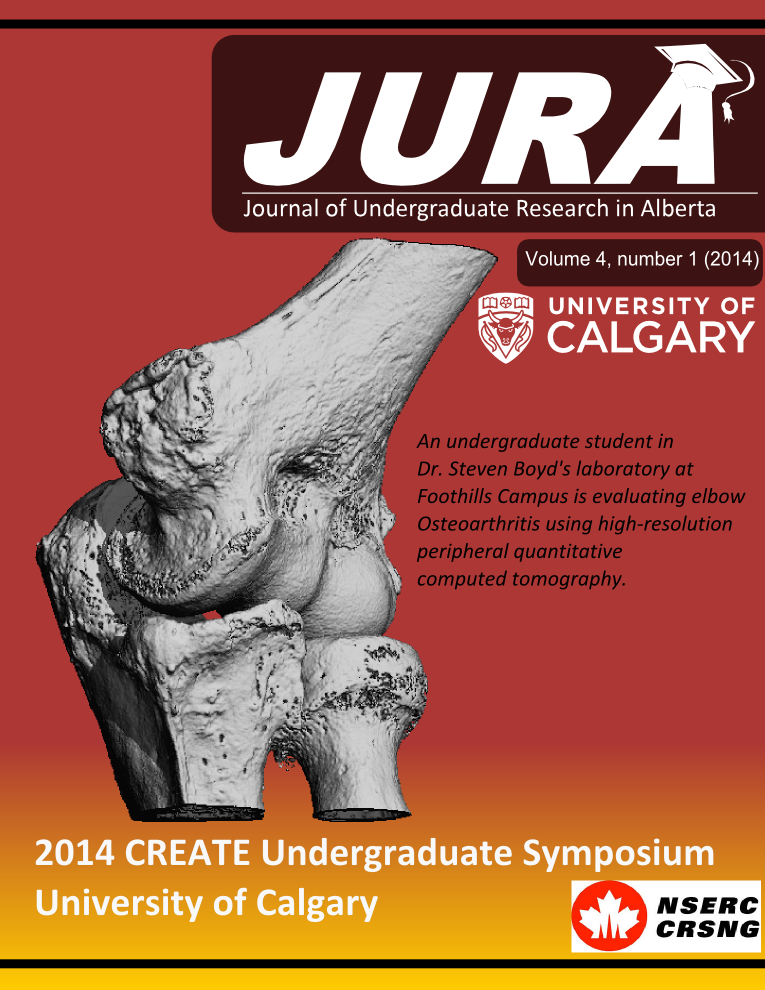CONTRACTILE PROTEIN NUMBER IN ADJACENT SARCOMERES – IS THERE A DIFFERENCE?
Abstract
INTRODUCTION
Variation in sarcomere length within an actively contracting skeletal muscle has often been observed yet remains unexplained. Sarcomeres within a myofibril are connected in series and thus they must each produce the same amount of force [1]. We know that the amount of force that a sarcomere can produce is related to the amount of overlap between the actin and myosin filaments within it. As a result, sarcomere length affects the amount of force that a sarcomere can produce [2]. If we assume that sarcomeres within a myofibril contain the same number of contractile proteins, it would be expected that sarcomeres within a myofibril would be of the same or similar length thus producing the same amount of force. However, it has been observed that sarcomere lengths vary within myofibrils [3] causing us to hypothesize that contractile protein number differs between adjacent sarcomeres. The purpose of this study was to identify the number of myosin filaments in serially arranged sarcomeres and determine if this number differed. The hope was to provide a possible explanation for the difference in serially arranged sarcomere lengths within myofibrils.
METHODS
Bundles of rabbit psoas muscle fibers about 2 mm in diameter were harvested and placed in a modified Karnovsky’s fixative. The fibers were post fixed with 1% osmium tetroxide and then put through a standard dehydration and infiltration process. The muscle samples were teased apart under a dissecting scope to get bundles about 100 μm in diameter and embedded in Embed 812 Resin. Blocks were cut into 100 nm thick slices perpendicularly to the embedded samples to obtain cross sections of the muscle samples. Sectioning was done using an ultracut microtome. The sections were stained with uranyl acetate and lead citrate and viewed under an electron microscope to obtain images of myofibril cross sections. The number of myosin filaments present was then counted manually.
RESULTS
An electron micrograph of a sarcomere cross section was obtained and is shown in Figure 1. The number of myosin filaments counted was 715 in this sarcomere of approximate cross sectional area 0.7 μm2.
LIMITATIONS
Due to the size of our samples (about 100 μm in diameter) compared to the size of a single myofibril (about 1 μm in diameter) we were not able to follow a single myofibril in multiple micrographs and compare the number of myosin filaments in adjacent sarcomeres.
DISCUSSION AND CONCLUSIONS
In this study we were successful in obtaining an electron micrograph of a sarcomere in cross section and counting the number of myosin filaments within it. We anticipate that when we are successful in counting the number of myosin filaments in adjacent sarcomeres, we will find a difference, thus providing a possible explanation for the variance in sarcomere length within a myofibril.
From this investigation we have identified a viable method for imaging sarcomeres in cross section and counting the number of myosin filaments within them. The next step is to refine the protocol in order to embed smaller samples. With smaller samples it will be easier to locate and track a single myofibril in multiple electron micrographs and compare the number of myosin filaments in adjacent sarcomeres.
Downloads
References
2. Gordon A. M., et al. J Physiol. 184:170-192, 1966
3. Herzog & Leonard. J Exp Biol 205:1275–1283, 2002.
Downloads
Published
Issue
Section
License
Authors retain all rights to their research work. Articles may be submitted to and accepted in other journals subsequent to publishing in JURA. Our only condition is that articles cannot be used in another undergraduate journal. Authors must be aware, however, that professional journals may refuse articles submitted or accepted elsewhere—JURA included.


